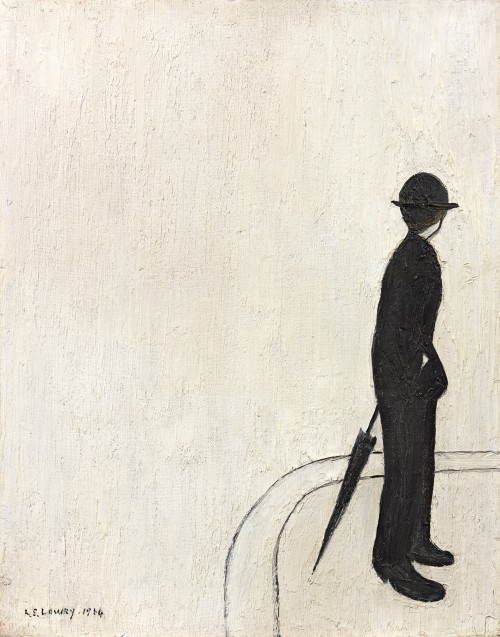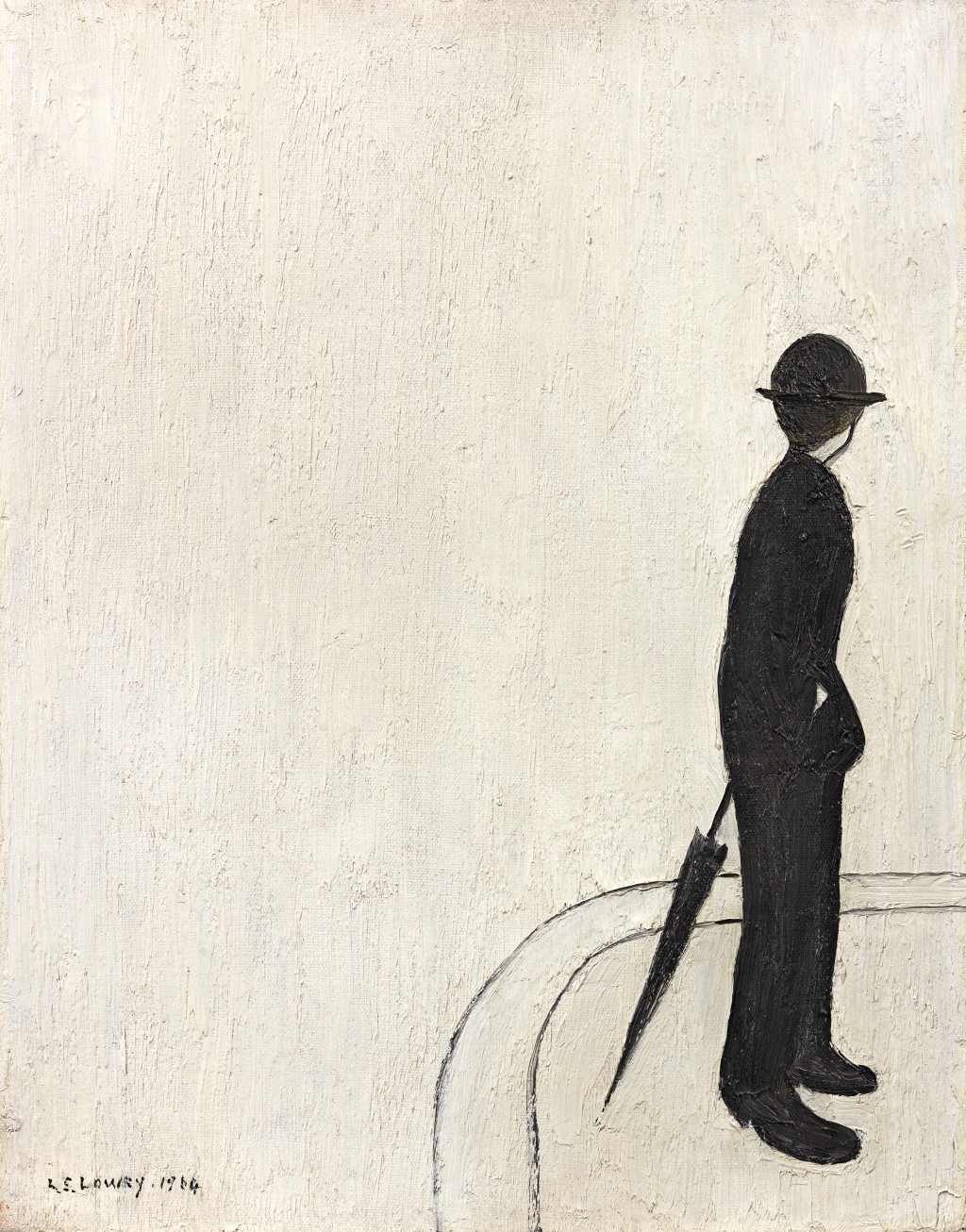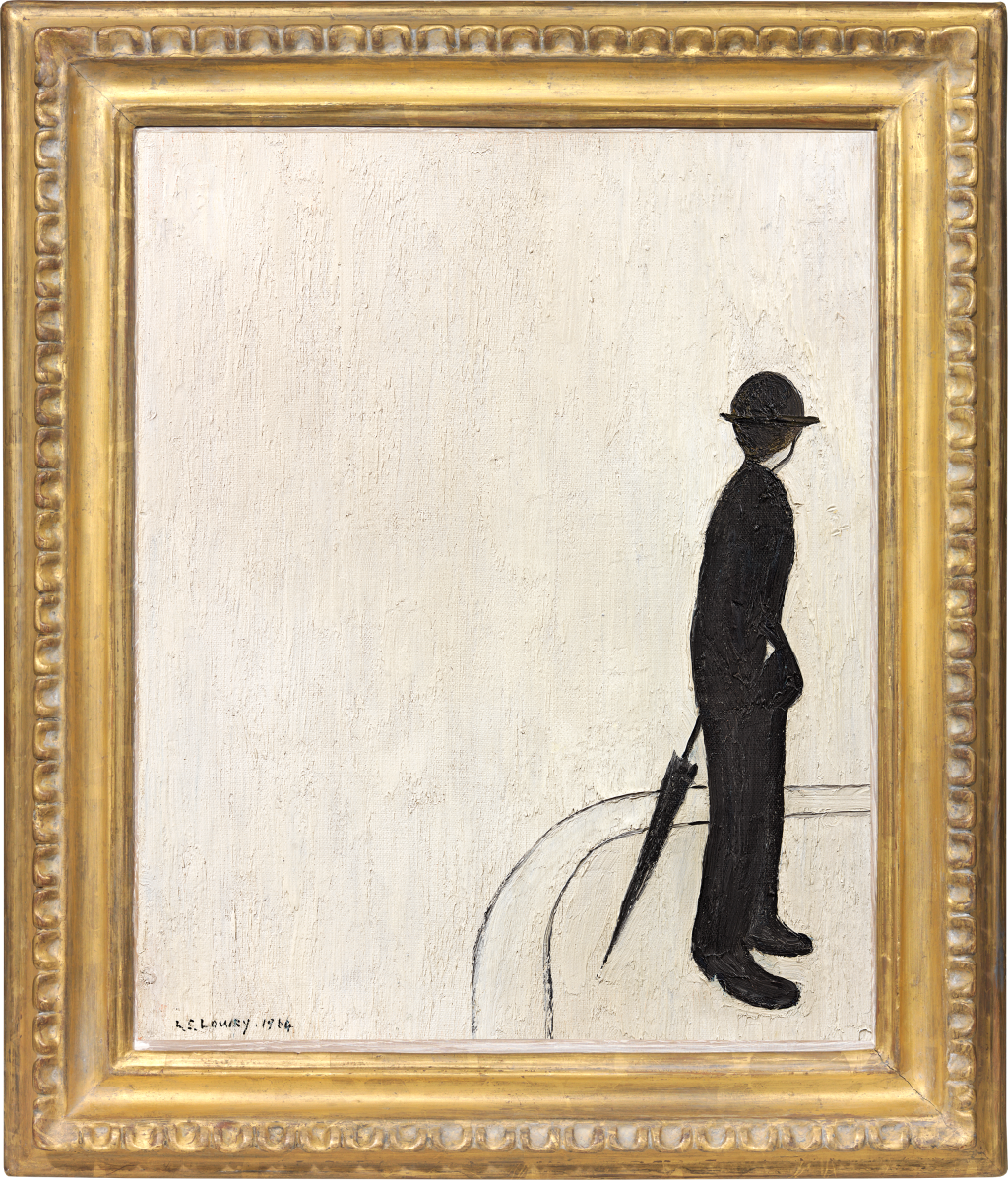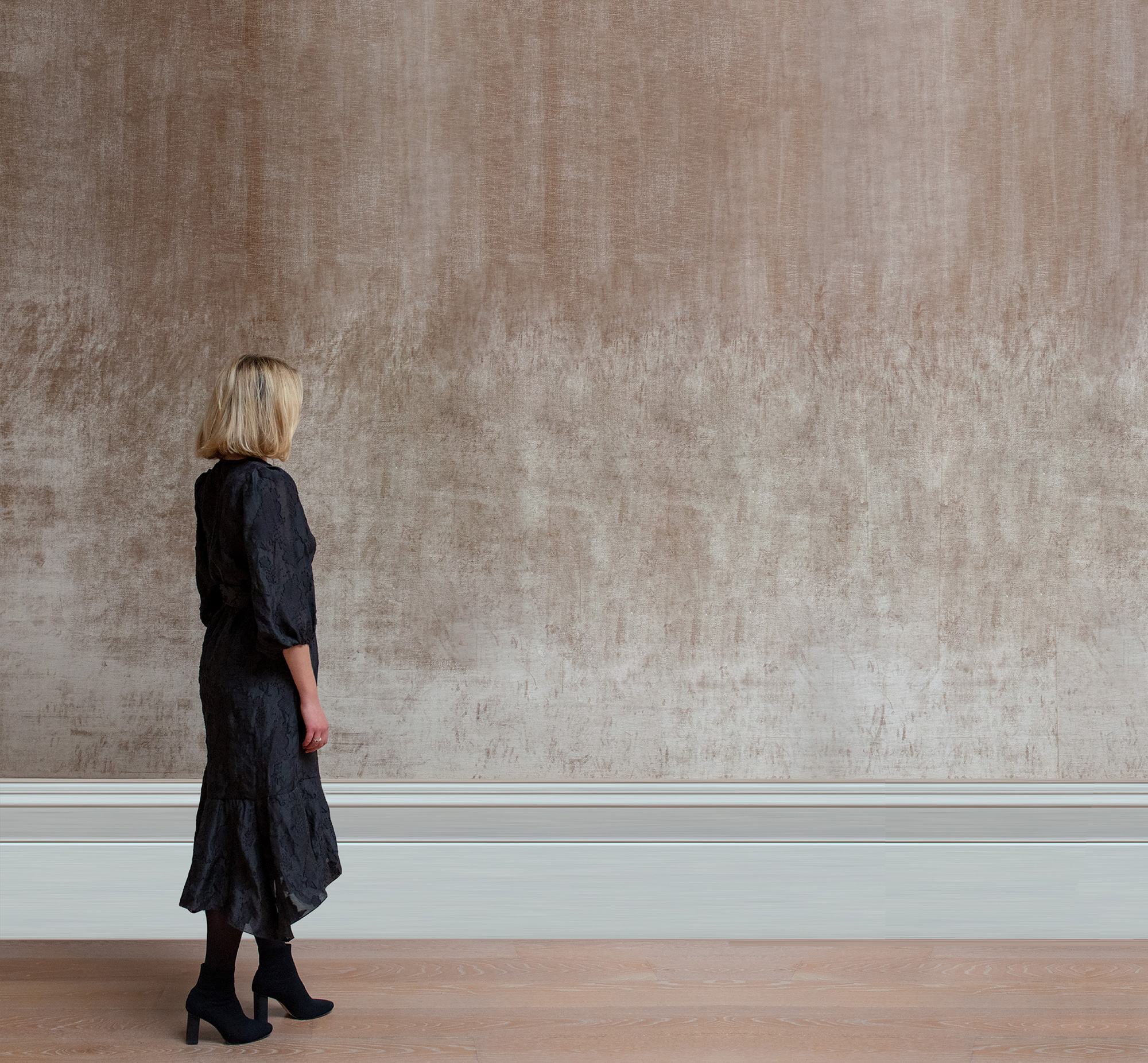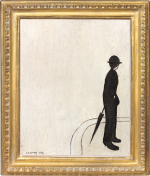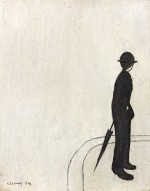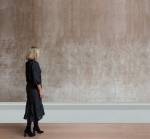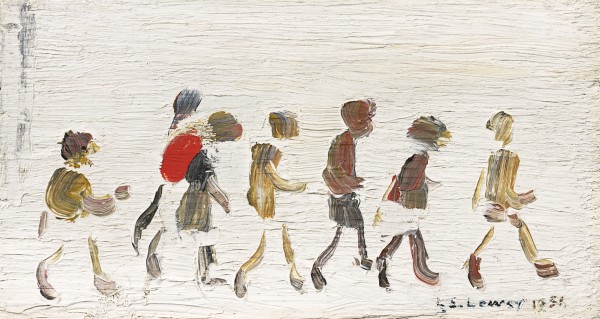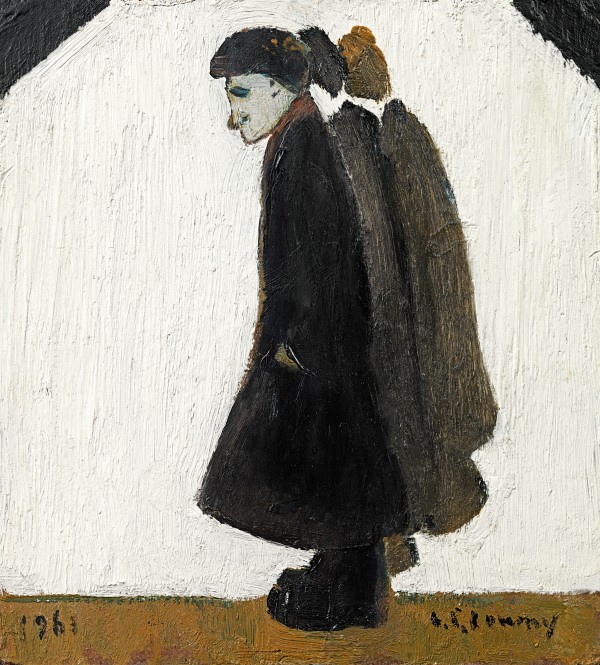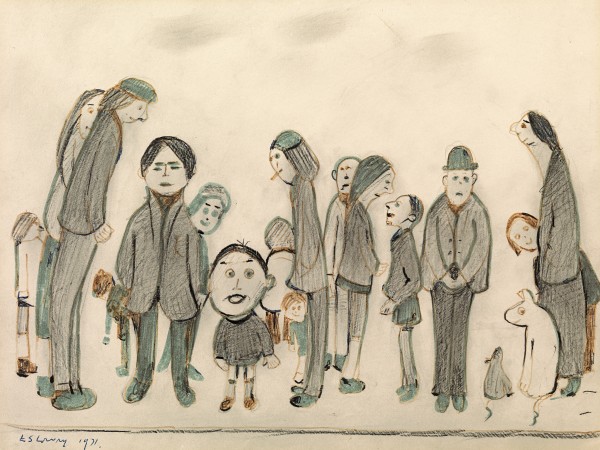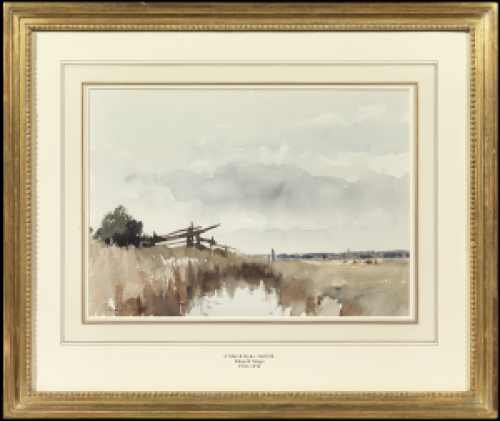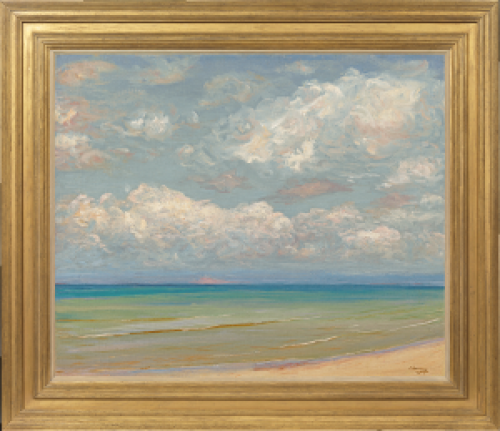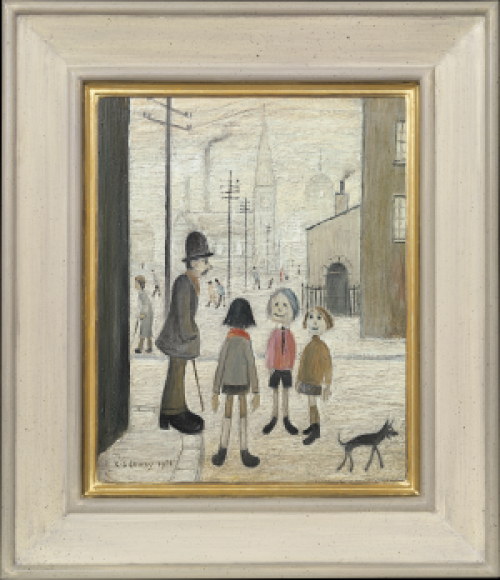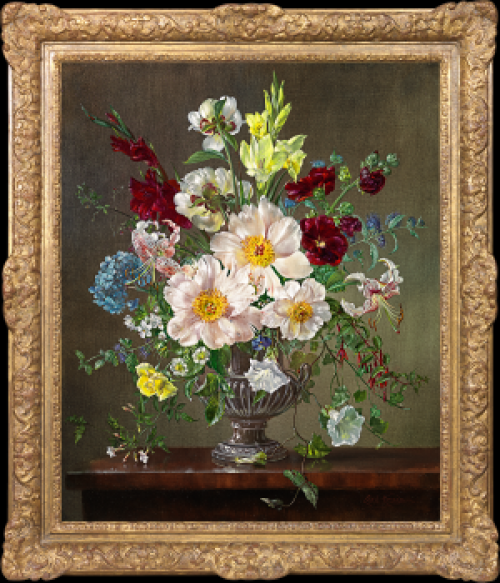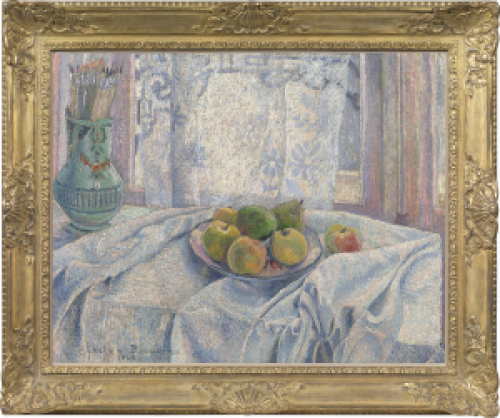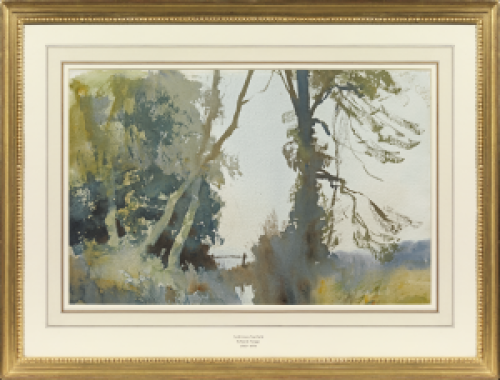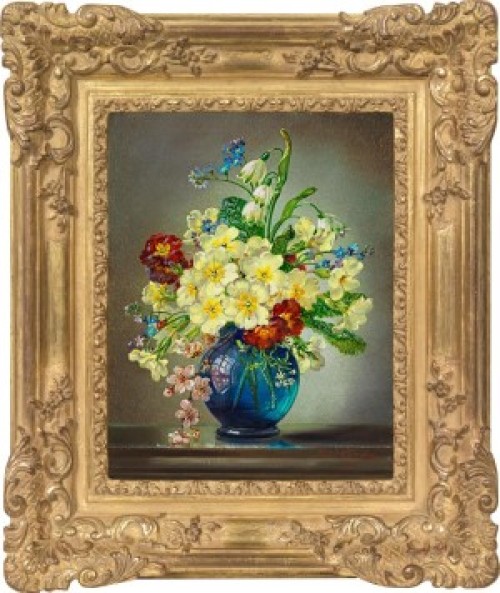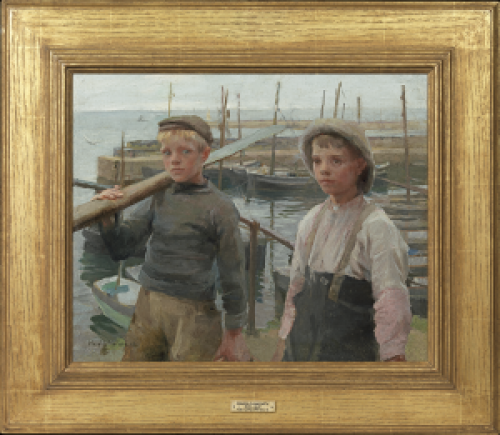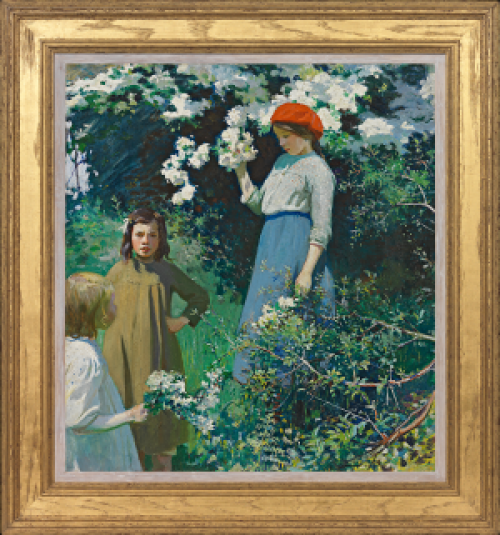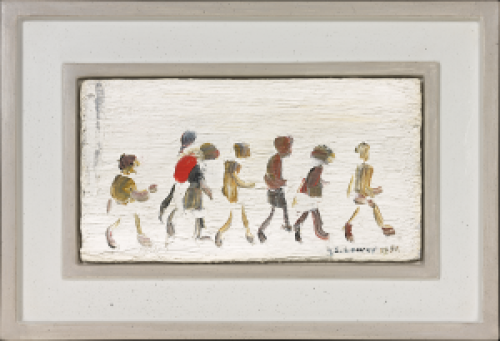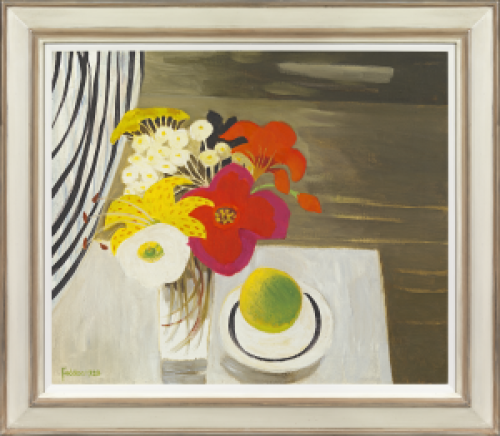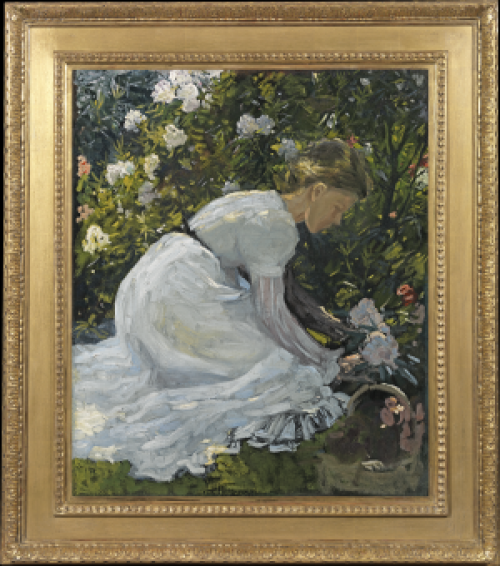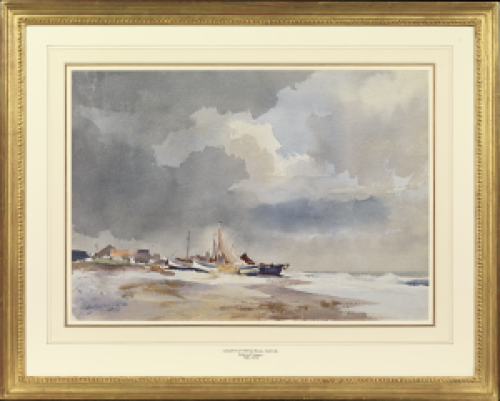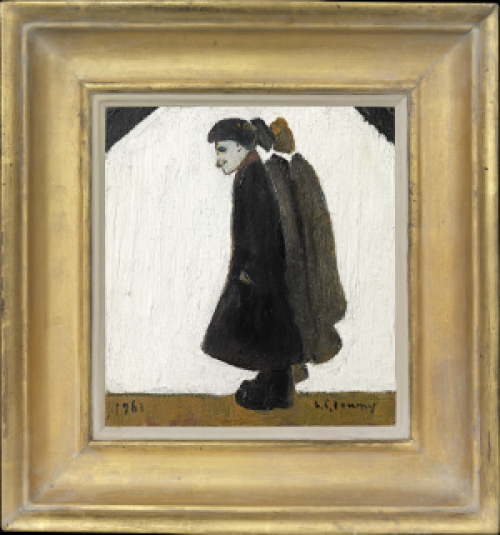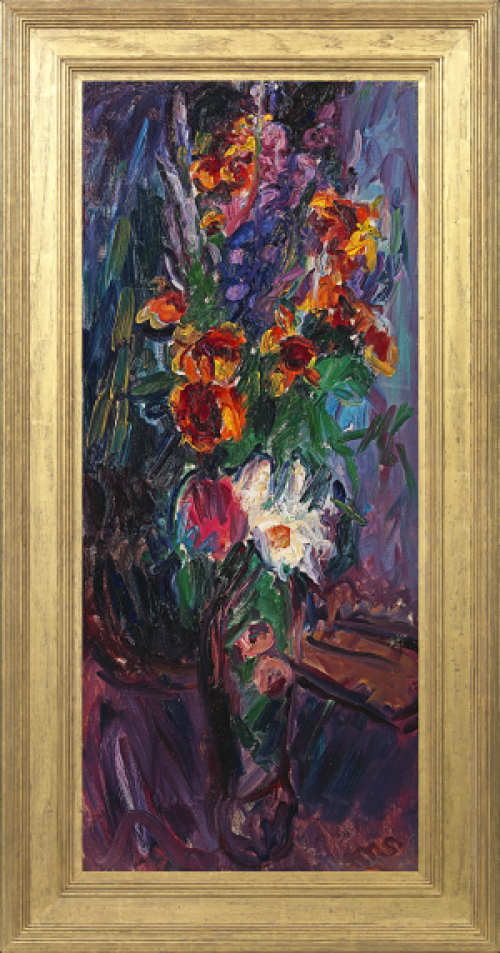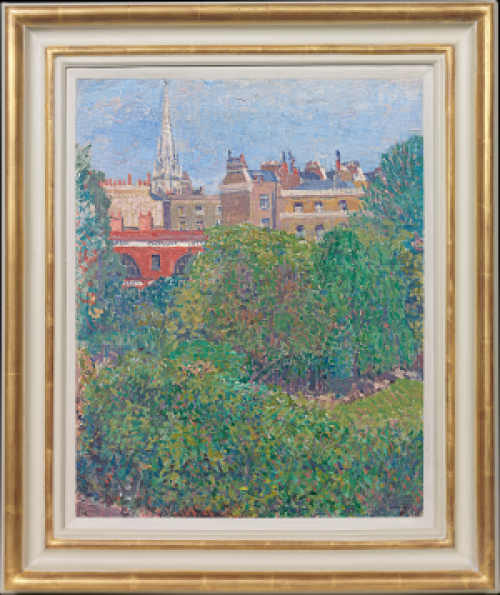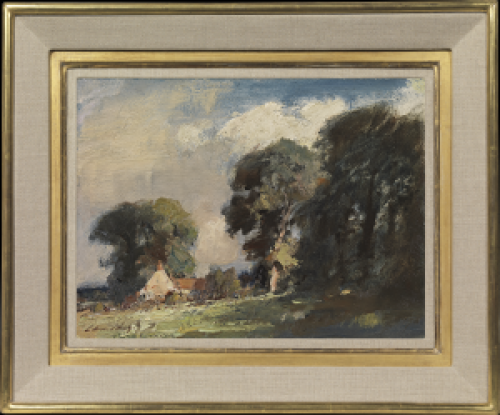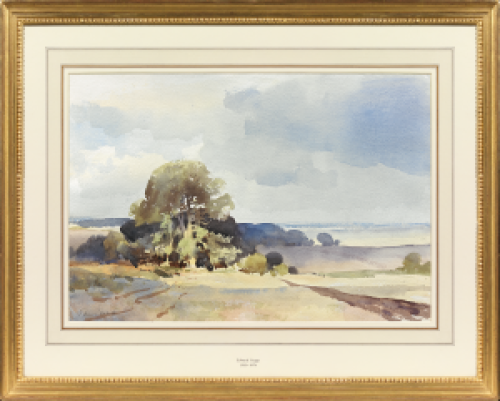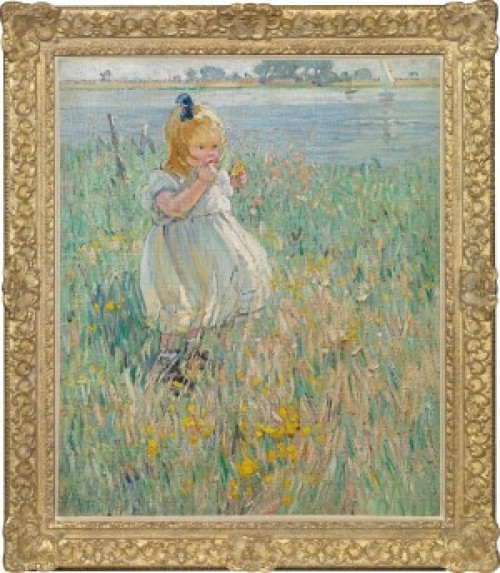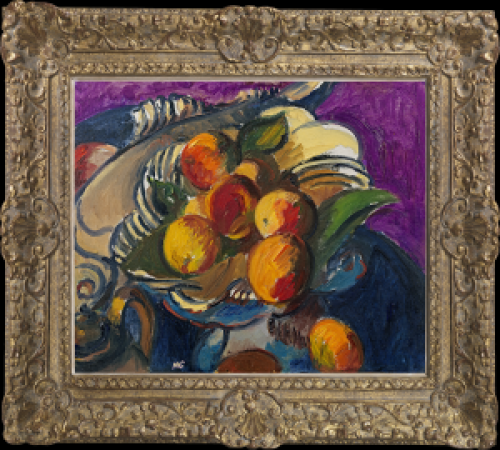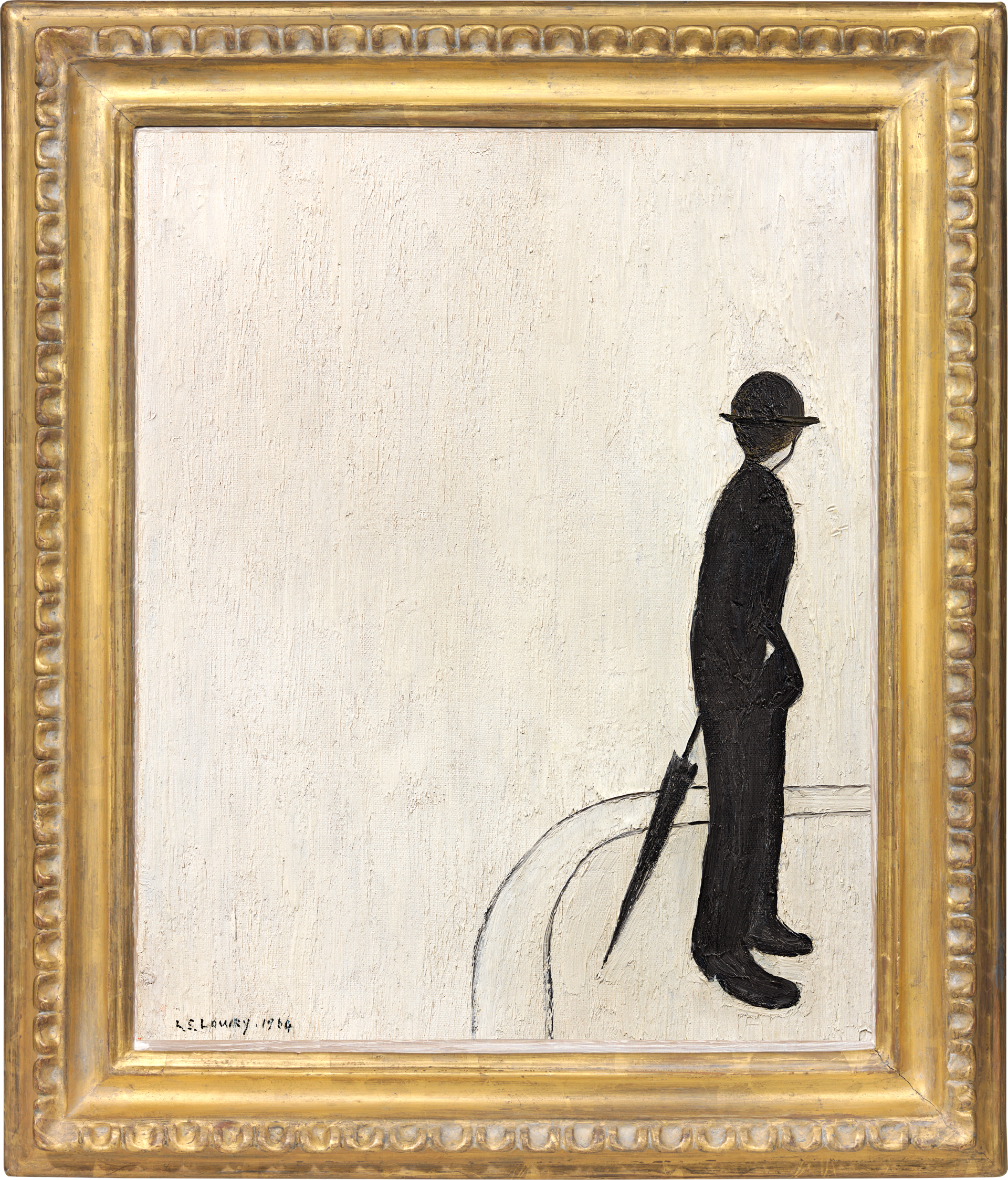LAURENCE STEPHEN LOWRY RA RBA LG NS
Manchester 1887 - 1976 Glossop
Ref: CC 220
A man waiting
Signed and dated lower left: L.S. LOWRY . 1964;
inscribed on the reverse: MAN WAITING
Oil on canvas laid down on board: 18 x 14 in / 45.7 x 35.6 cm
Frame size: 22 x 18 ½ in / 55.9 x 47 cm
In an antique carved and gilded frame
Provenance:
Lefevre Gallery, London [X8359], directly from the artist;
Keith Ewart (1926-1989), London, acquired from the above by 1976
Exhibited:
London, Lefevre Gallery, Paintings by LS Lowry, 11th May – 3rd June 1967, no.16, illus. p.11
London, Royal Academy of Arts, LS Lowry, 4th September-14th November 1976, no.289, p.90
Kendal, Abbot Hall Lakeland Arts, long-term loan, 2013-2024
Kendal, Abbot Hall Lakeland Arts, Not so grim up North, 17th January-12th April 2014
Literature:
Mervyn Levy (ed.), The Paintings of LS Lowry: Oils and Watercolours, Jupiter Books, London 1977, no.76, illus.
As the industrial backdrops began to disappear from Lowry’s work, he concentrated more on painting the characters that had previously only featured amongst the crowds in his landscapes. The artist said ‘Without knowing what it was, I had an instinctive feeling that the time had come to drop the industrials. Now I feel more strongly than ever that the figures just stand on their own two feet.’[1]
Lowry’s unique ability to convey the human condition is considered to be one of his greatest skills. He developed an acute psychological insight which is apparent in every one of his figure paintings. These paintings are suffused with the artist’s own deep sense of isolation and Maurice Collis suggests that these figures ‘…are his own reflection as if seen in a distorting mirror, the projections of his mood, his very shadows, ghosts of himself, sometimes even becoming direct self-portraits…Nevertheless, their relevance to the pictorial setting is sufficiently natural for them to have been taken solely for what they purport to be, citizens walking the streets of Manchester. Thus, his paintings are both scenes of contemporary life and psychological statements. This duality adds greatly to their force and permanence.’[2]
Following the sell-out success of his one-man exhibition at the Lefevre Gallery in 1961, Lowry dramatically changed the emphasis of his paintings to focus on single or small groups of figures, stating “I feel more strongly about these people than I ever did about the industrial scene.”
Note on provenance: Keith Ewart (1926-1989)
A renaissance man, photographer, cinematographer, musician and pilot, Keith Ewart had an exceptional eye.
Ewart served in Germany with the Horse Guards before going to New York and becoming a photographer. Returning to London, he worked in fashion and advertising, contributing images to Vogue and Harper’s, which helped define the swinging sixties.
In 1954, a year before the launch of ITV, he set up an experimental studio making pilot television commercials with the advertising agency J Walter Thompson, going on to direct many famous ads for brands such as Maxwell House, Fairy Liquid and Benson & Hedges, often with a young Ridley Scott as his art director.
Ewart constructed purpose-built studios in Wandsworth in 1967, and in the 1970s transferred to video. From 1982, Ewart Studios were used by independent producers to film TV shows for Channel 4, including Jonathan Ross’s, The Last Resort. Ewart sold the studios to Capital Radio group in 1989.
Ewart was also a brilliant jazz musician, a passionate clarinet player, and held a private pilot’s licence, frequently flying medical staff, supplies and transplant organs over Europe for the St John’s Air Wing.
[1] Shelley Rohde, L S Lowry, a biography, The Lowry Press, Salford 1999, p.371.
[2] Maurice Collis, The Discovery of L S Lowry, Lund Humphries for Alex Reid & Lefevre Ltd., London 1951, pp.21-22.

